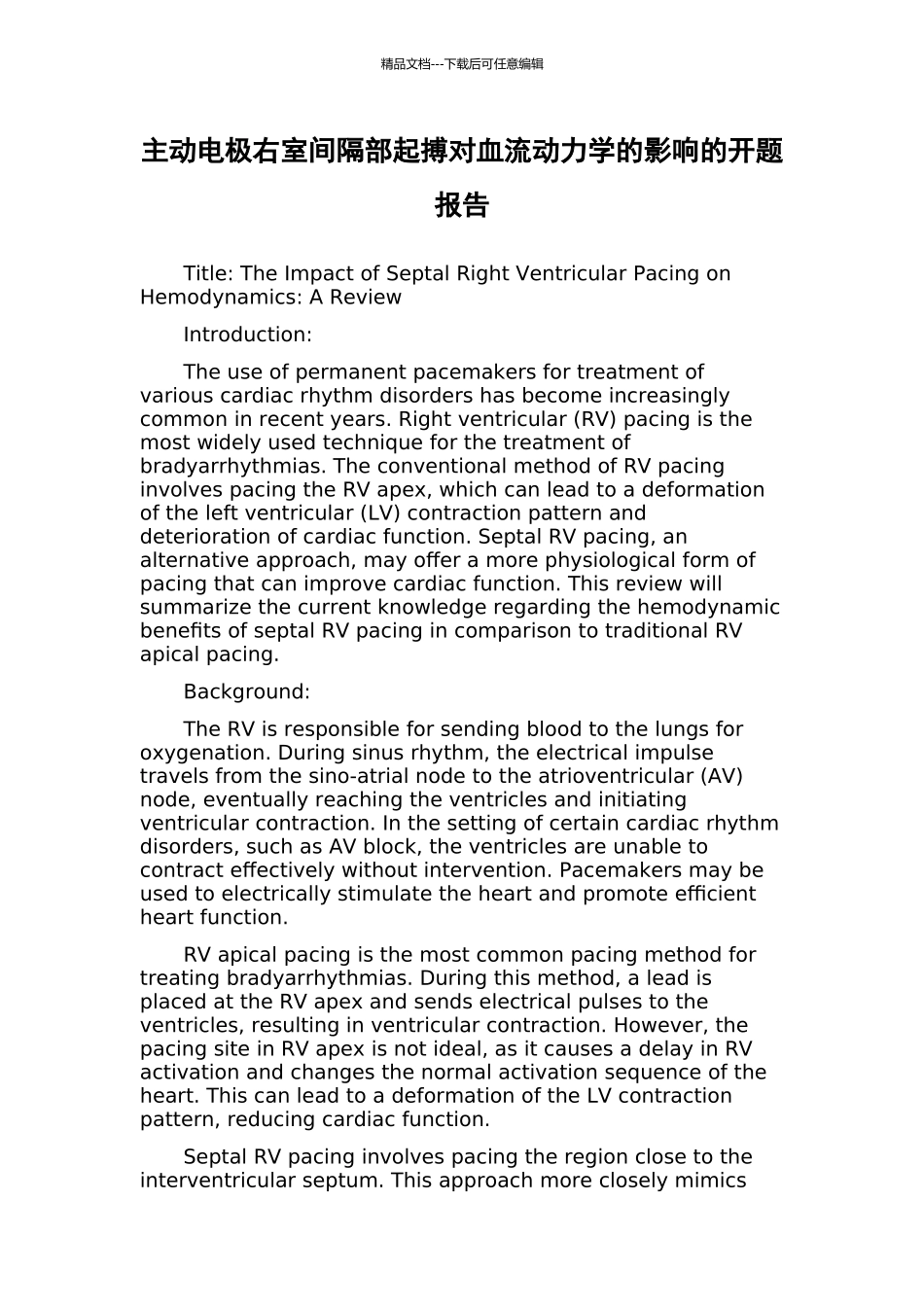精品文档---下载后可任意编辑主动电极右室间隔部起搏对血流动力学的影响的开题报告Title: The Impact of Septal Right Ventricular Pacing on Hemodynamics: A ReviewIntroduction:The use of permanent pacemakers for treatment of various cardiac rhythm disorders has become increasingly common in recent years. Right ventricular (RV) pacing is the most widely used technique for the treatment of bradyarrhythmias. The conventional method of RV pacing involves pacing the RV apex, which can lead to a deformation of the left ventricular (LV) contraction pattern and deterioration of cardiac function. Septal RV pacing, an alternative approach, may offer a more physiological form of pacing that can improve cardiac function. This review will summarize the current knowledge regarding the hemodynamic benefits of septal RV pacing in comparison to traditional RV apical pacing.Background:The RV is responsible for sending blood to the lungs for oxygenation. During sinus rhythm, the electrical impulse travels from the sino-atrial node to the atrioventricular (AV) node, eventually reaching the ventricles and initiating ventricular contraction. In the setting of certain cardiac rhythm disorders, such as AV block, the ventricles are unable to contract effectively without intervention. Pacemakers may be used to electrically stimulate the heart and promote efficient heart function.RV apical pacing is the most common pacing method for treating bradyarrhythmias. During this method, a lead is placed at the RV apex and sends electrical pulses to the ventricles, resulting in ventricular contraction. However, the pacing site in RV apex is not ideal, as it causes a delay in RV activation and changes the normal activation sequence of the heart. This can lead to ...

